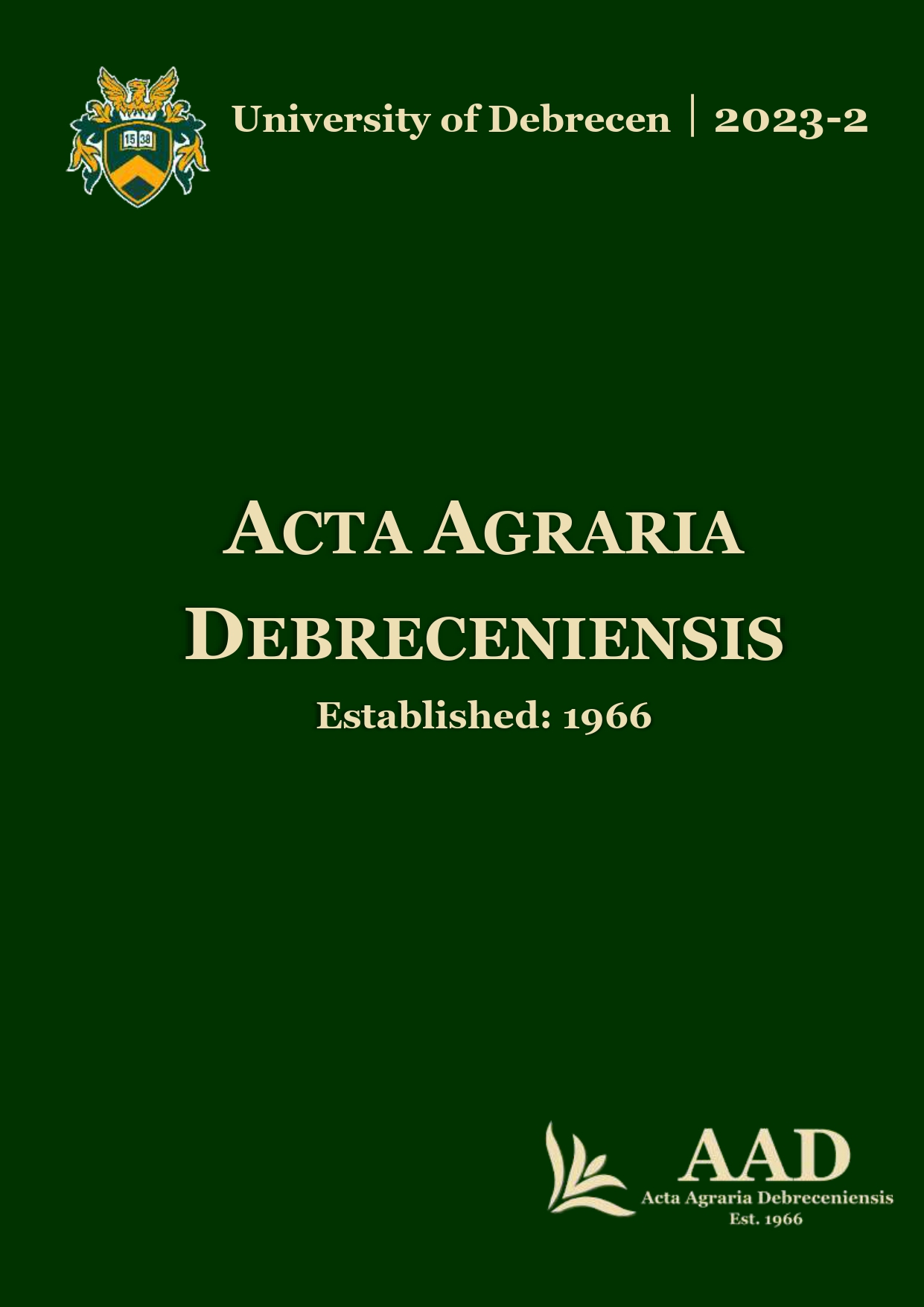Study on the cold tolerance of maize (Zea mays L.) inbred lines in Phytotron
Authors
View
Keywords
License
Copyright (c) 2023 by the Author(s)

This work is licensed under a Creative Commons Attribution 4.0 International License.
How To Cite
Accepted 2023-09-05
Published 2023-12-01
Abstract
Maize has come a long way from the tropics to the temperate zone. In the beginning, the spreading of maize was prevented by its sensitivity to cold. Improved cold tolerance at germination is one of the most important conditions for early sowing. The advantage of cold tolerant hybrids is that they can be sown earlier, allowing longer growing seasons and higher yields, due to the fact that the most sensitive period in terms of water requirements, flowering, takes place earlier, i.e. before the onset of summer drought and heat.
In Martonvásár, continuous research is carried out to improve the cold tolerance of maize. In the present experiment, the cold tolerance of 30 genetically different maize inbred lines was investigated in a Phytotron climate chamber (PGV-36). The aim of our research is to identify cold tolerant lines that can be used as parental components to produce proper cold tolerant hybrids and/or as sources of starting materials for new cold tolerant inbred lines. After observing and evaluating changes in phenological traits under cold-test, the results of the cold-tolerance traits of interest have been used to highlight several inbred lines that could be good starting materials for further research on genetic selection for cold tolerance.
References
- Berzsenyi, Z. (2012): Kukorica. In: Radics L.: Fenntartható szemléletű szántóföldi növénytermesztéstan 2. Budapest: Agroinform Kiadó, 11–85.
- Brandolini A.–Landi P.–Monfredini G.–Tano F. (2000): Variation among Andean races of maize for cold tolerance during heterotrophic and early autotrophic growth. Euphytica 111, 33–41. https://doi.org/10.1023/A:1003710431416
- Dőry, I.–Böddi, B.–Kissimon, J.–Paldi, E. (1990): Cold stress responses of inbred maize lines with various degrees of cold tolerance. Acta Agronomica Hungarica, 1990 - cabdirect.org
- Eagles, H.A. (1982): Inheritance of emergence time and seedling growth at low temperatures in four lines of maize. Theoret. Appl. Genetics 62, 81–87. https://doi.org/10.1007/BF00276289
- FAOSTAT, 2023: https://www.fao.org/faostat/en/#data/QCL
- Fischer, R.A.–Byerlee, D.–Edmeades, G.O. (2014): Crop Yields and Global Food Security: Will Yield Increase Continue to Feed the World? ACIAR Monograph No. 158. Australian Centre for International Agriculture Research.
- Gombos, B. (2021): A kukorica éghajlatigénye. In: Nagy, J. (2021): Kukorica. Budapest: Szaktudás Kiadó, 165–172.
- Lehenbauer, P.A. (1914): Growth of maize seedlings in relation to temperature, Phys10l. Re~. 1: 247–288.
- Marton, L.C.–Szőke, C.–Pintér, J. (2013): Studies on the Maize Cold Tolerance Tests in the Martonvásár Phytotron. Acta Agronomica Hungarica, 61(1), pp. https://doi.org/10.1556/AAgr.61.2013.1.4
- Marton, L.C.–Tóthné, Zs.Zs. (2017): Advances in cold-tolerant maize varieties. In: Achieving sustainable cultivation of maize Volume 1. p.32.
- Nagy, J. (2021): A kukorica morfológiája és fejlődése In: Kukorica; A nemzet aranya – Élelmiszer, takarmány, bioenergia. Budapest: Szaktudás Kiadó Ház Zrt., 4.3.3:47–50.
- Sanchez, B.–Rasmussen, A.–Porter, J.R. (2014): Temperatures and the growth and development of maize and rice: a review. Glob. Chang. Biol. 20, 408–417. https://doi.org/10.1111/gcb.12389
- Soane, B.D.–Ball, B.C.–Arvidsson, J.–Basch, G.–Moreno, F.–Roger-Estrade, J. (2012): No-till in northern, western and south-western Europe: a review of problems and opportunities for crop production and the environment. Soil Till. Res, 118, pp. 66–87. https://doi.org/10.1016/j.still.2011.10.015
- Spiertz, H. (2014): Agricultural sciences in transition from 1800 to 2020: exploring knowledge and creating impact. Eur. J. Agron., 59, pp. 96–106. https://doi.org/10.1016/j.eja.2014.06.001
- Szundy, T.–Pók, I.–Marton, L.C. (2005): Cold tolerance of inbred lines and sister line crosses of maize with different genetic background. Acta Agronomica Hungarica, 53(1), pp. 81–87.
- Zydelis, R.–Weihermüller, L.–Herbst, M.–Klosterhalfen, A.–Lazauskas, S. (2018): A model study on the effect of water and cold stress on maize development under nemoral climate. Agricultural and Forest Meteorology. Volume 263, Pages 169–179. https://doi.org/10.1016/j.agrformet.2018.08.011

 https://doi.org/10.34101/actaagrar/2/12578
https://doi.org/10.34101/actaagrar/2/12578